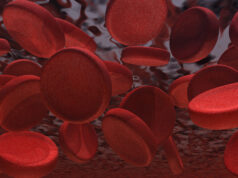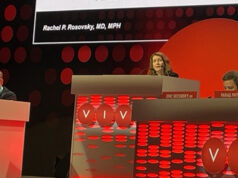
A few months ago a discussion on the LinkedIn page of the American College of Phlebology caught my attention: “Medicare: maximum four endovenous laser therapies per lifetime?”
In Belgium we can use one radiofrequency catheter or endovenous laser ablation fibre per patient per lifetime and only for the greater saphenous vein, which sometimes can be rather challenging. The idea of being able to use four in a lifetime seemed like bliss to me. National healthcare reimburses 45% of the cost of the fibre; the rest is paid by the patient or his/her private insurance. Moreover, if another saphenous vein needs to be treated a few years later, the patient is not allowed to pay for the catheter at all; the bill will be sent to the surgeon.
The question made me wonder how authorisation and reimbursement criteria would differ in other European countries, since medical shopping across the borders within Europe is authorised. As I expected, Europe may be united, but its healthcare policy clearly is not. Every different scenario is available.
In Denmark all patients are covered through state health insurance and no prior authorisation for using radiofrequency or endovenous laser ablation is necessary. Since doctors are not paid per procedure but instead have a monthly salary, the American situation of a boom in venous endovascular procedures in recent years has been avoided.
In The Netherlands the treatment is completely reimbursed, but authorisation must be obtained before the intervention and it depends on CEAP (Clinical, Etiological, Anatomical and Pathophysiological) classification, diameter and reflux. Both long and short saphenous veins are included. Laser ablation is used more often than radiofrequency because of the cost difference for the hospitals. Every year a convention between insurers and hospitals decides which “all-in price”—including pre- and postoperative care—will be paid by the insurers for different treatments.
In France, only radiofrequency is reimbursed, but the price for the intervention has not been modified from the price for a stripping, and hence does not take into account the cost of the catheter. Even if the patient is willing to pay for the catheter it would be illegal. It is not illegal if a laser fibre is used, but then both the fibre and the surgical act itself will not be reimbursed, with the patient ending up paying for everything.
Sweden has state health insurance but no common countrywide guidelines regarding the treatment of varicose veins. What is covered is decided locally in each of the 21 independently-governed geographical areas. Some health insurers only cover interventions for C4 or worse, while others cover symptomatic patients C2. Private hospitals use laser and radiofrequency, while general hospitals more often use radiofrequency or foam.
This is somewhat similar to Italy, where endovenous surgery is not reimbursed except for in the regions of Lazio, Veneto, Marche and in the province of Bolzano, but at very different rates. Reimbursement is only for laser and is always less than the reimbursement for open surgery and saphenectomy, except in the region of Marche. Great, small and anterior accessory saphenous vein can be treated without any specific authorisation or limitation.
In Bulgaria there is no reimbursement for the catheter. The patient will be charged for it, but apparently there is no big difference between the prices in public and private hospitals.
In Hungary, national health insurance covers only the costs of traditional surgery in their hospitals. If the patients want an endovenous intervention or foam sclerotherapy, they have to go to a private hospital, without any reimbursement at all. There are fewer than 10 surgeons performing endovenous laser ablation or radiofrequency for the country’s 10 million inhabitants.
There is no reimbursement for radiofrequency or endovenous laser ablation by the public health systems of Spain and Catalonia; the patient or private insurance will have to pay.
In Iceland the laser fibre is paid for by the patient, who is charged about 25% (€450) of the total cost of the intervention (€1,850). Phlebectomies are included.
With the NHS in the UK the patient pays nothing at all, irrespective of the nature of the procedure, although the choice of treatment depends mainly on the experience and preference of the physician. In the private sector, patients who are paying for themselves pay all the costs and can choose the technique if they wish. Patients using private health insurance are very limited, as most insurers will only reimburse certain techniques.
A study published in the British Journal of Surgery in 2010 concluded that day-case surgery or endovenous ablation using endovenous laser ablation or radiofrequency ablation performed as an outpatient are likely to be cost-effective treatment strategies for patients with primary unilateral greater saphenous vein reflux requiring treatment. The 2015 CLASS (Comparison of laser, surgery and foam sclerotherapy) randomised controlled trial has shown that laser ablation (performed under a local anaesthetic, in a predominantly clinic-based setting) has the highest probability of being cost-effective, a finding consistent with the results of the NICE clinical guideline. Despite these guidelines and the positive response of the patients, a lot of European surgeons persist in reticence against thermal techniques, unlike their American colleagues.
The countries communicating the price of the laser fibre quote amounts of around €300. Taking into consideration that most patients treated with thermal ablation can go back to work within two or three days (but often stay home for one or two weeks after open surgery), economically it is worth spending €300 more for the treatment. Leave of absence is definitively more expensive, but is probably not paid by the same institution.
Since most of us are born with four saphenous veins, it would seem logical to provide reimbursement for the treatment of all these veins, or at least allow the well-informed patient to pay for them. Not so with Belgian logic…
Inga Vanhandenhove is a vascular surgeon at AZ Monica, Antwerp, Belgium









